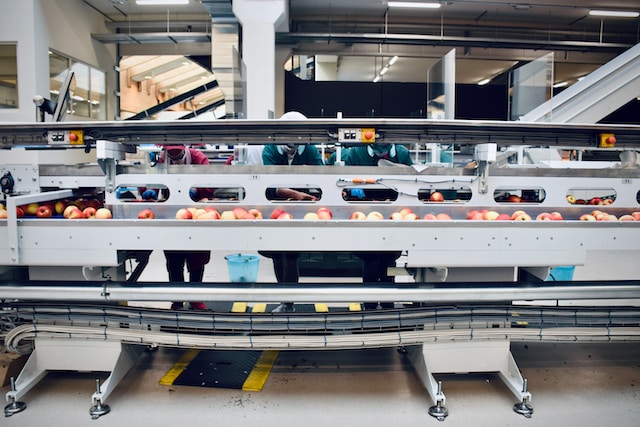Conveyor systems play a role in today’s industries by smoothly transporting goods, materials and products. Among the types of conveying systems available, chain conveyors have gained adoption due to their numerous advantages. However, it is important to understand how chain conveyors differ from other conveying systems. This comparative analysis aims to explore the distinctions and benefits of chain conveyors in relation to prevalent conveying systems.
Chain Conveyors: An Overview
Chain conveyors are devices that utilize a chain to move materials or products from one location to another. A motor drives the chain, ensuring seamless movement along the conveyor path. These conveyors are typically utilized for heavy-duty applications and are specifically designed to handle bulky items.
Belt Conveyors: The Main Competitor
Belt conveyors represent another type of conveying system commonly employed in industries such as mining, agriculture, and food processing. Unlike chain conveyors, belt conveyors employ a belt comprised of materials like rubber, PVC, or fabric for transporting goods. They are recognized for their flexibility and adaptability, making them suitable for an array of applications.
Advantages of Chain Conveyors Compared to Belt Conveyors
Durability and Loading Capacity
One major benefit of chain conveyors, over belt conveyors, is their durability and ability to handle loads. Chain conveyors are specifically designed to transport weighty items, making them ideal for industries like manufacturing, construction, and mining. The construction and sturdy chains ensure efficient transportation even in demanding conditions.
Handling Inclines and Declines
Chain conveyors excel at managing inclines and declines, making them suitable for applications that involve the movement of materials. On the other hand, belt conveyors have limitations when it comes to handling inclines or declines. This advantage establishes chain conveyors as the choice in industries such as agriculture, where materials need to be transported across various terrains.
Pneumatic Conveyors: An Alternative Approach
Pneumatic conveyors provide a method of material transportation by utilizing air or gas to propel materials through a pipeline. This conveying system is particularly beneficial for handling powdered materials in industries like pharmaceuticals, chemical processing, and food production.
Advantages of Chain Conveyors Compared to Pneumatic Conveyors
Cost-effectiveness
When comparing chain conveyors with pneumatic conveyors, the former often offers a cost-effective solution.
Pneumatic conveying systems necessitate an investment in equipment and infrastructure, including air compressors, filters, and pipelines. On the other hand, chain conveyors require intricate machinery, which reduces both initial costs and maintenance expenses.
Minimized Material Degradation
While both chain conveyors and pneumatic conveyors can transport powdered materials, pneumatic conveyors are known for causing degradation to the materials being transported. The forceful air movement in pneumatic conveyors can lead to attrition or breakage of particles. This makes chain conveyors a preferable option for industries that handle sensitive materials such as pharmaceuticals or food products.
Roller Conveyors: A Different Approach
Roller conveyors utilize rollers to facilitate the controlled movement of materials along the conveyor line. This type of conveying system is commonly employed in transportation and distribution centers as assembly lines.
Advantages of Chain Conveyors over Roller Conveyors
Flexibility and Adaptability
Chain conveyors offer flexibility and adaptability when it comes to layout and customization compared to roller conveyors. The modular design of chain conveyors allows for the incorporation of bends, inclines, and declines, as well as additional features like transfers and diverters.
The adaptability of chain conveyors makes them a great choice for industries that require conveyor setups, like manufacturing or warehousing.
Reliable Handling of Heavy Loads
While roller conveyors can transport goods of heavy weight effectively, chain conveyors are better suited for handling bulky loads. The use of chains and sprockets in chain conveyors ensures dependable movement even when dealing with weights. This advantage makes chain conveyors the preferred option in industries that need to transport products or materials.
Conclusion
Chain conveyors offer advantages over other types of conveying systems, making them an essential asset in various industries. Their exceptional durability, load capacity, and ability to handle inclines and declines make them a superior choice compared to belt conveyors. Additionally, their cost effectiveness, reduced material degradation, and flexibility set them apart from conveyors. When compared to roller conveyors, chain conveyors excel in terms of versatility and their ability to handle loads.
As industries continue to evolve and demand innovation, chain conveyors will undoubtedly remain relevant and continue playing a role in improving efficiency and productivity.







